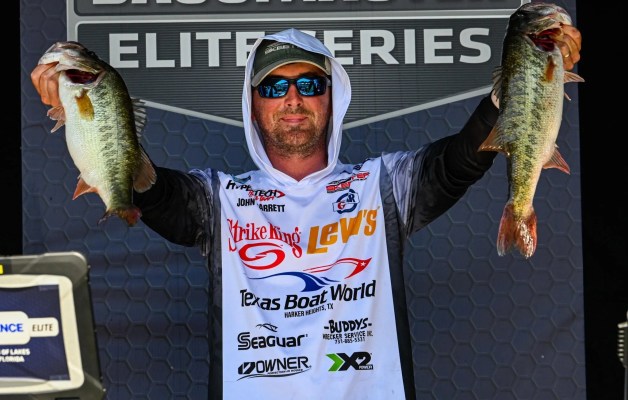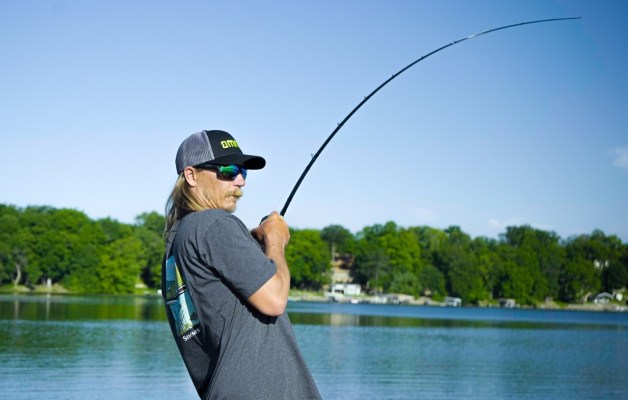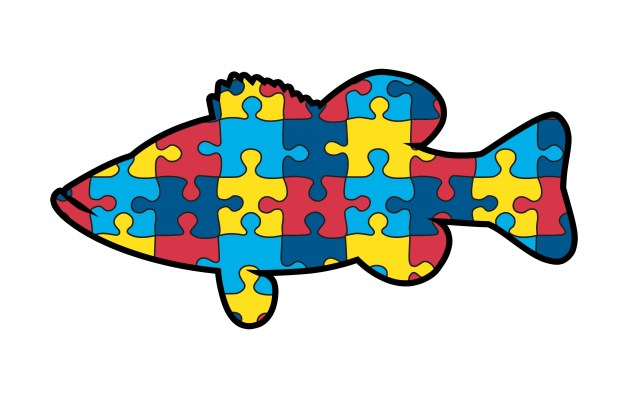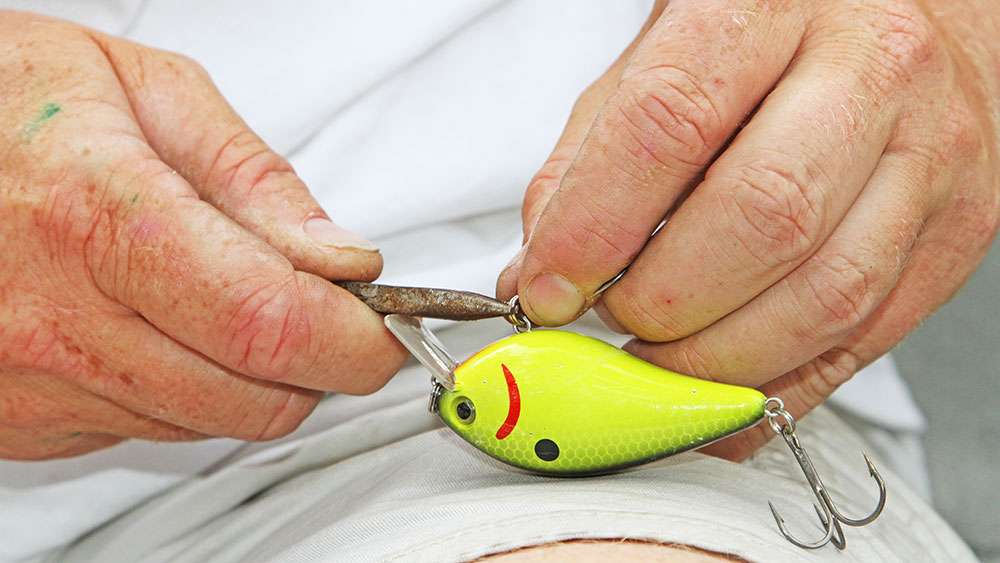
If there’s one thing Greg Hackney has learned in his 16 years as a professional angler, it’s the wisdom of change. Change locations, change tactics, change baits — flexibility rules. But there’s one small change that Hackney has found to bear significant impact on his ability to effect a desired result — hooks.
“I use to be one to sharpen the hooks that came on the bait, but now I don’t do that because typically you can buy an aftermarket hook that is sharper than what you can do with a file.”
Hackney’s general preference is a short shank treble in a size or two bigger than the bait’s standard hardware. This allows him to maintain a similar profile (i.e. how deeply the hook hangs) and action, while affording a better hook-up opportunity.
That being said, he wants maximum firepower for hitting a moving target.
“I typically like to go with the biggest hook I can put on a bait because that increases my chances of catching a fish on a treble hook bait,” Hackney said. “With crankbaits, jerkbaits, topwaters or anything with a treble hook, that fish is harder to land — even with all those hooks — than a fish that was caught on a single hook bait.”
That said, Hackney offers a few examples of hook changes with situational strategies.
Dead Heads
“I like to run over size hooks on my crankbaits to cut down on the action if I want it to run tighter; deadening the action a little. I do this in clear water, heavy fishing pressure, cold water or around a school of pressured fish.”
For example, on a KVD 2.5 squarebill, Hackney often replaces the standard No. 2 hooks with short shank No. 1 when he’s fishing it around heavy cover, or a 1/0 for open water use over shell beds, rock, etc. Both offer greater lip-grabbing ability, but both options serve particular purposes.
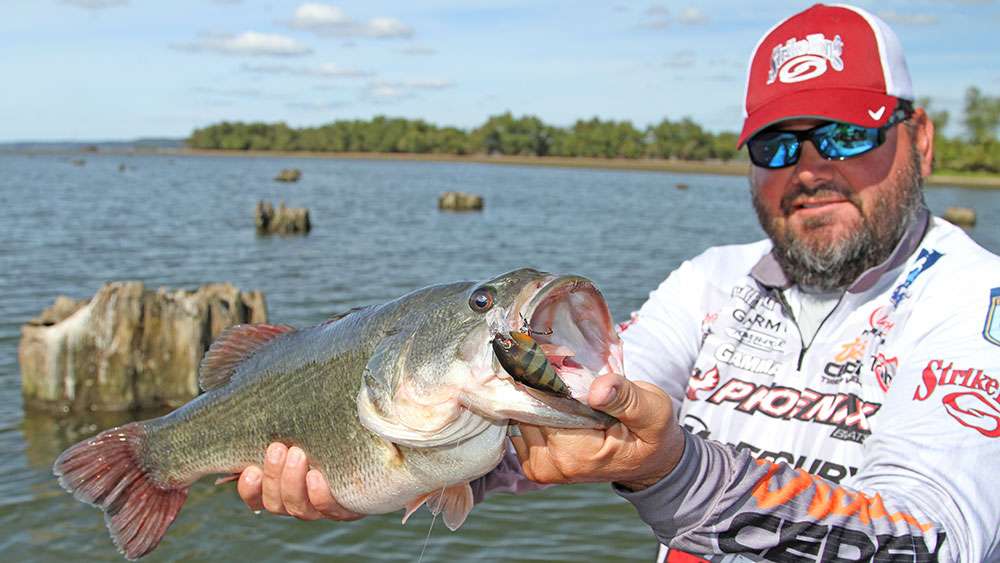
“If I’m fishing pressured fish that aren’t target-oriented, I’m cranking a spot, I go to a 1/0 because it deadens the action. You still have that big profile, but you have a more natural action — a shad does not have an aggressive action.
“I like that bait’s aggressive action around cover for trying to draw out the fish. But when I’m cranking open water, maybe even cranking grass in clear water, I still want that big profile bait, but I don’t want that super aggressiveness that the 2.5 is known for.”
Heads Up (Or Down)
Adding a larger hook on the front or rear of his jerkbait yields a nose-down or tail-down posture. The former fits the largemouth’s preference for a dying baitfish, but the latter holds strategic value for smallies in clear northern waters.
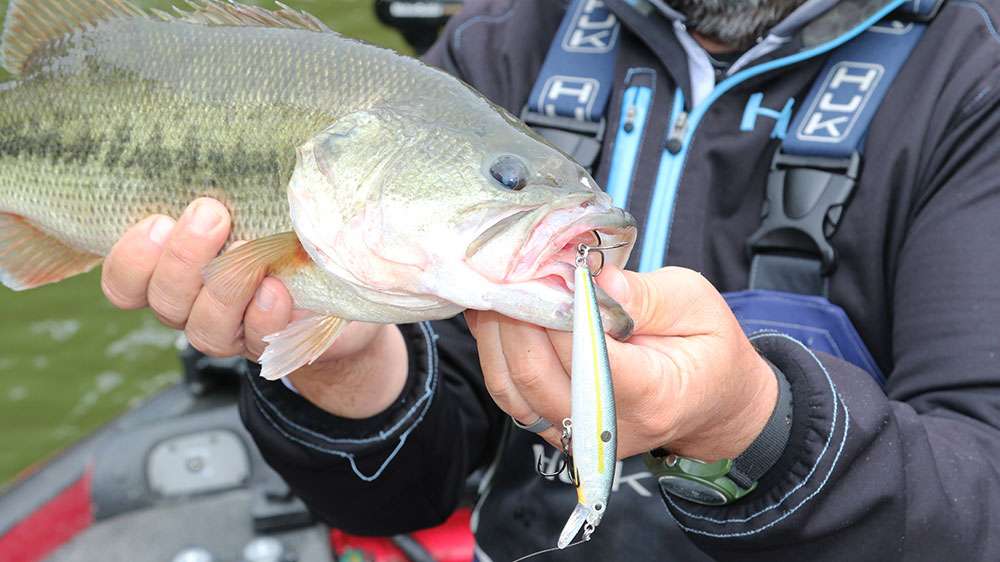
“If I’m ripping that bait, when I stop it, that big hook on the back makes that bait turn and fall backward,” he said. “A lot of times, that’s just enough action to make those fish finish the deal in a clear water situation.
“I’m still jerking that bait nose-down, but the instant I stop it, with that big hook on the back, it will tilt tail-down. In clear water, those fish are looking at that bait and a lot of times, this will get them to commit.”
Hackney further explains that adding a larger hook to a standard short-bill suspending jerkbait’s front end allows him to reach a couple feet deeper — without making it sink.
“You can put bigger hooks on the entire bait, but if you go too big in cold water, the bait will sink,” he said. “A lot of people don’t realize you can manipulate your hooks because of the water temperature and make it do different things.
“You have to be careful because it’s a lot easier to sink the bait in cold water than it is in warm water because the air and gas inside the bait will make it more buoyant.”
Last point on jerkbaits: Hackney doesn’t want his bait moving too erratically in cold water. Adding more hook weight numbs the action just enough to maintain a pace the fish will tolerate. Doing so, however, may require a tackle adjustment.
“A lot of times, when I add a bigger hook, I have to drop my line size to keep the bait neutral in the cold water,” he said. “In the summertime, I can get by with 14-pound fluorocarbon because of the water temperature, but in extremely cold water, I may have to go to 10- or 8-pound line.”
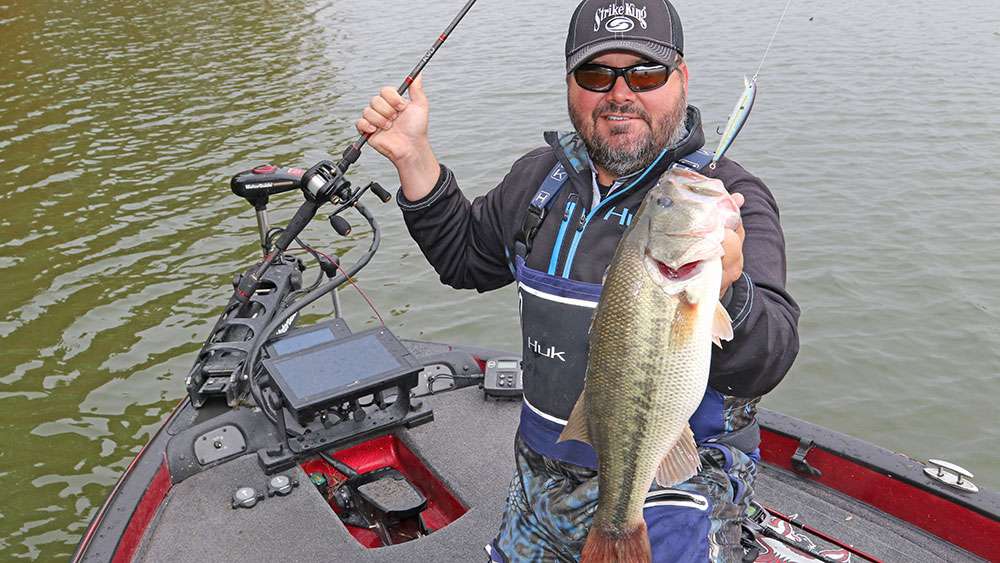
Give and Take
Upsizing to 2X strong No. 4 trebles for deep diving crankbaits means swapping buoyancy for a couple more feet of depth. No problem, says Hackney; the spots where he’d use a 6XD or an 8XD don’t have a lot of snags.
Conversely, adding those No. 4s to the Strike King Lucky Shad — a flat sided balsa bait with a tight action made for cold water — tempers the bait’s extreme buoyancy and holds it in the fish’s face.
“When I’m cranking, if I hit a rock or deflect off a log, I can kill that bait and it will suspend,” he said. “Also, a lot of times in cold water you can get second chances. If I feel one swipe at the bait and not get it, I’ll stop the bait and it suspends.
“That serves two purposes: It (acts) like a jerkbait, but I can crank it and cover more water.”
Last tip: Hackney stores his replacement hooks in a clear Bass Mafia tray, but he only carries about 10 of each. Over packing trays, he said, leads to dull hooks, as masses of metal bump against one another during long runs.


